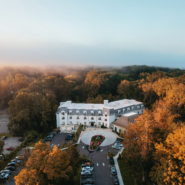The Reinvisioned Livingston Manor Fly Fishing Club
Joan Vos MacDonald | September 28, 2023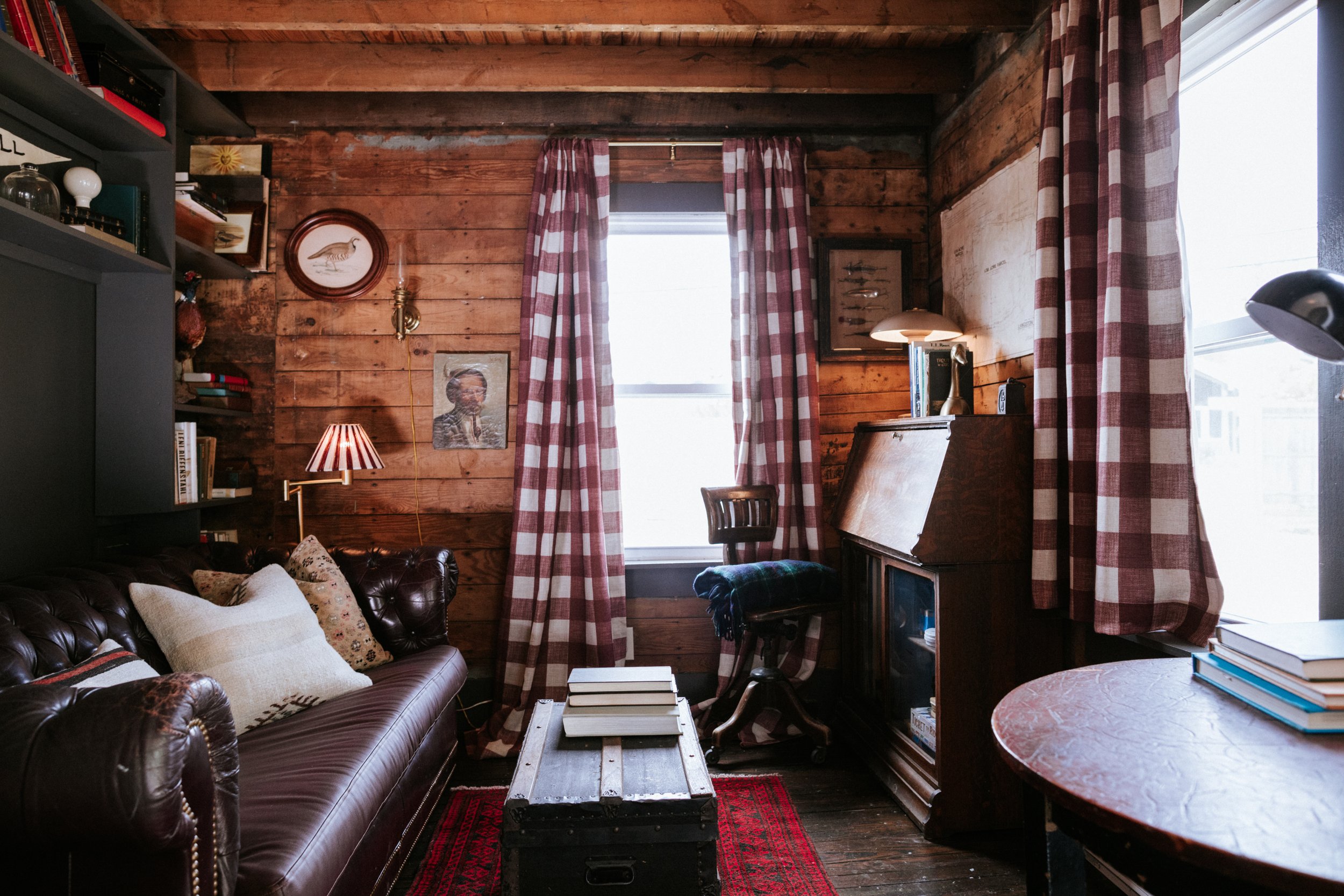
Photo by Peter Crosby
When Sally Watkinson and Doug Posey began their budding hospitality empire, neither had experience in the business—other than Posey’s odd restaurant jobs during college. Watkinson, who worked in corporate design, and Posey, a corporate lawyer, purchased Audrey’s Bed & Breakfast, a c.1740 cedar-shake farmhouse in Gardiner, as a side business and retreat from their New York City life. It wasn’t long before country life won them over.
“We bought Audrey’s farmhouse in May of 2015,” says Posey. “And we lived there full-time by September.” Without a background in hospitality, the couple winged it, doing much of the renovation, decorating, and management work themselves. Their reverence for the natural surroundings, plus their sense of place and clean decorating aesthetic soon paid off, attracting guests as well as additional staff.
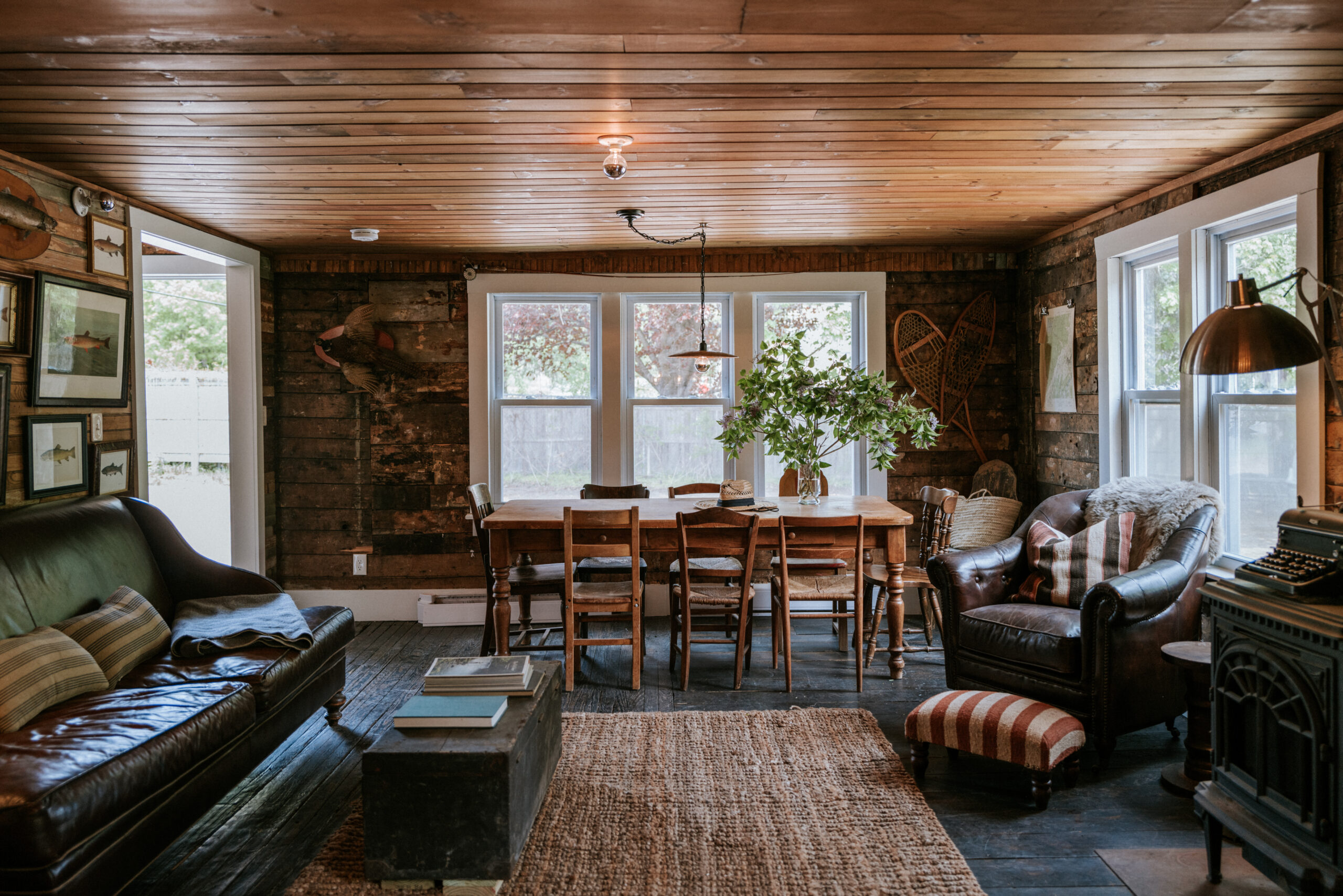
“I was just trying to figure it out, and [Doug] was kind of showing me the ropes,” says Watkinson. “But over time, because we were in it every day and we worked every facet of the business, we eventually were able to bring really great people onto the team.”
Acquiring support staff allowed the couple, who now have two children and two dogs, to further expand their hospitality empire. By 2018, they had also purchased the defunct flower nursery across the street from the B&B, transforming the hoop houses into a greenhouse-inspired gathering space, suitable for special events and weddings. Renamed The Greenhouses, the property also features 14 guestrooms.
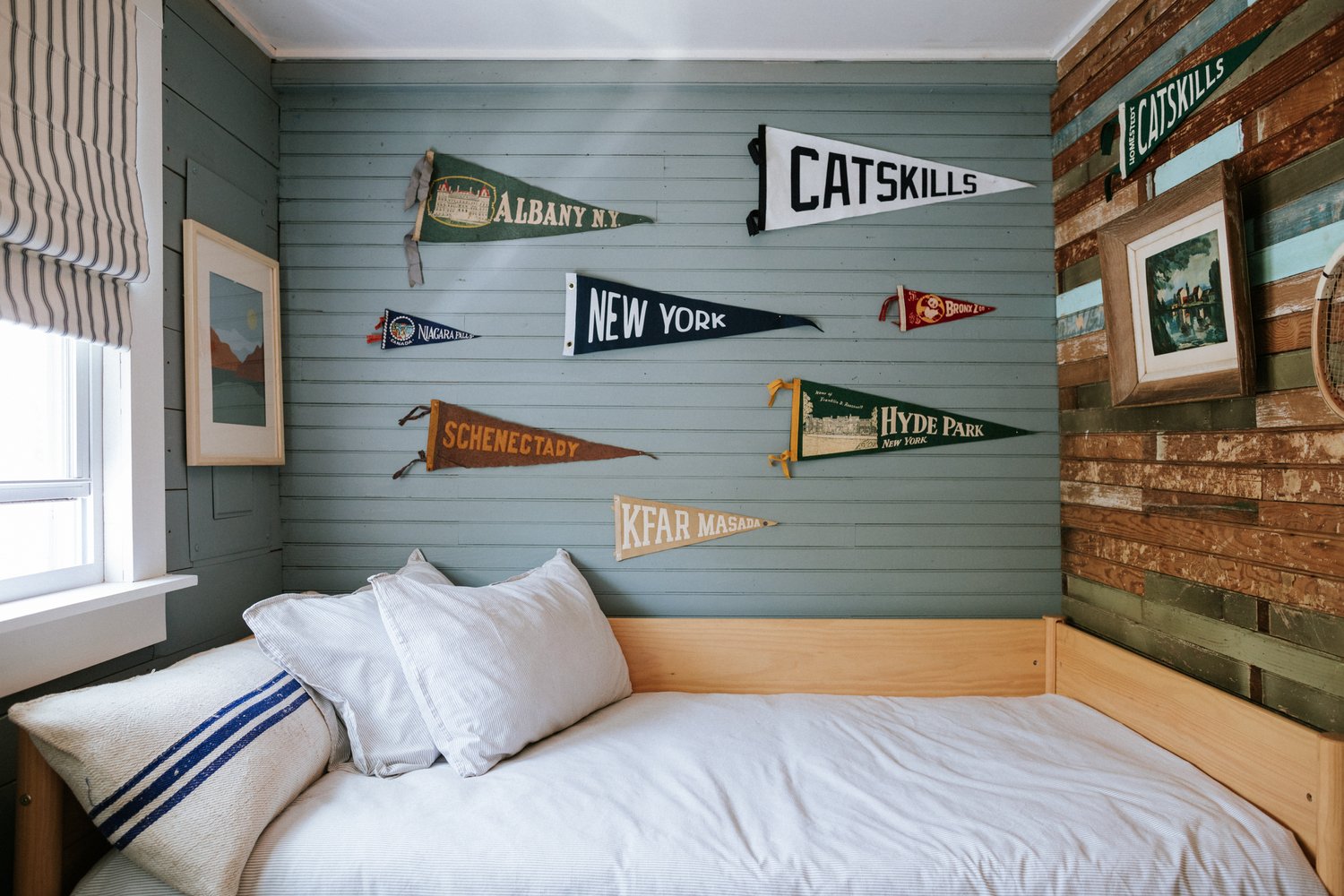
Local pennants adorn the wall of one guest room at the Livingston Manor Fly Fishing Club.
Their next acquisition was the Old Mill Guest House, a seven-unit property set on 24 acres in Plattekill. The 19-bedroom graffiti-decorated building had been vacant for a decade. Post renovations, it sleeps 50 guests and has a pool, rec room, courtyard and pergola. “It started because we were just going to do overflow lodging,” says Posey. “So, we said, what if there’s 150 people coming to The Greenhouse. Thirty of them can stay here in the farmhouse, where are the other 120 going? We should build something for them. They can stay and get a part of the experience from afar. Then they’ll come to the event and it will all be tied in.”
When guests surveyed the overflow Old Mill lodging options, they asked if they could have a wedding there instead. Why not, said the couple, and they added event options to the guest house.
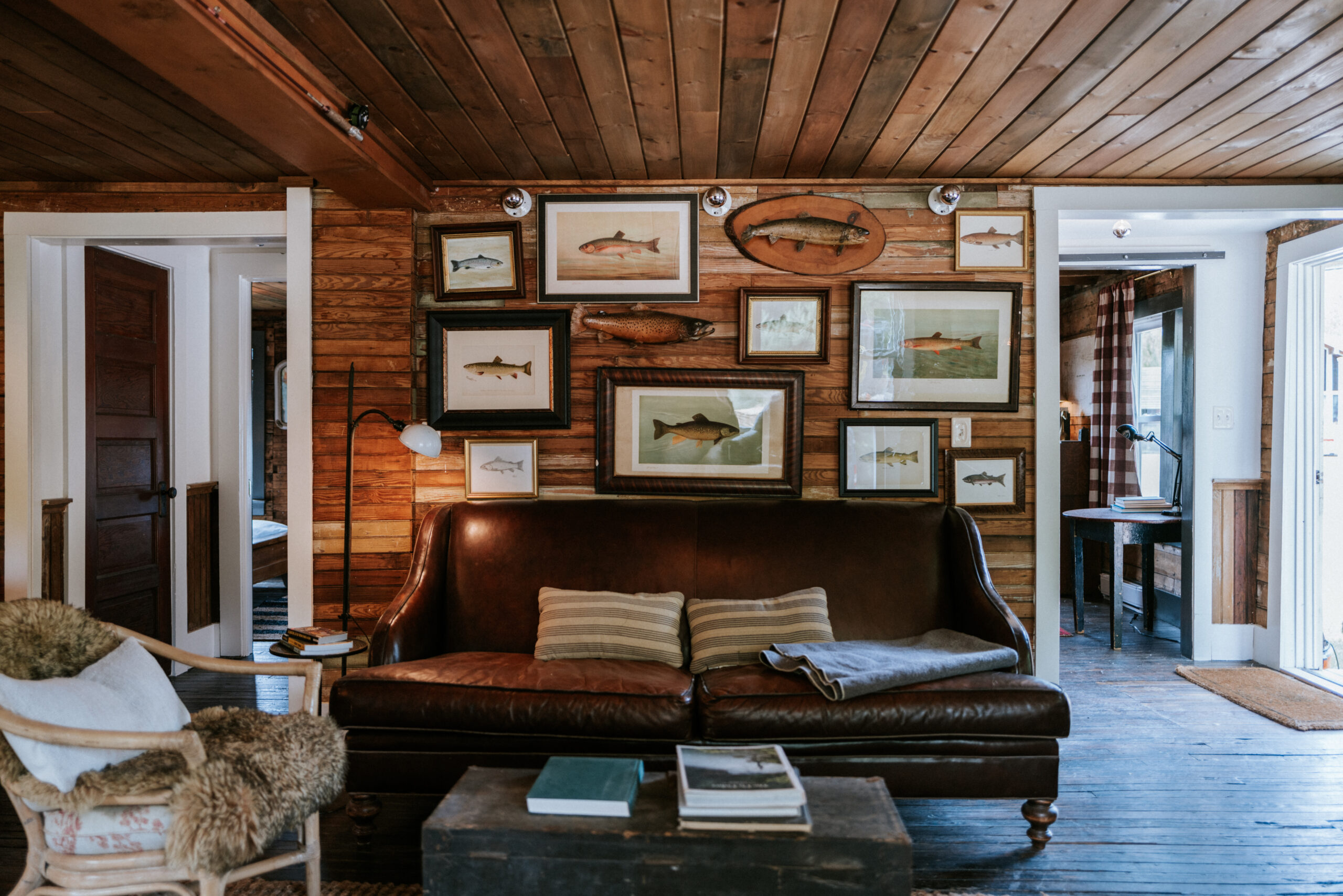 In October 2022, they purchased the Livingston Manor Fly Fishing Club. The former bed and breakfast, modeled after a fly fishing club, lies on the banks of the Willowemoc Creek, long considered the birthplace of fly fishing in America. With accommodations for 10 guests in two separate units, this property will offer weekday memberships and be open weekends for lodging reservations and events. The property has five lushly wooded acres and 600 feet of creek frontage, ideal for swimming and fishing.
In October 2022, they purchased the Livingston Manor Fly Fishing Club. The former bed and breakfast, modeled after a fly fishing club, lies on the banks of the Willowemoc Creek, long considered the birthplace of fly fishing in America. With accommodations for 10 guests in two separate units, this property will offer weekday memberships and be open weekends for lodging reservations and events. The property has five lushly wooded acres and 600 feet of creek frontage, ideal for swimming and fishing.
“There’s use of the creek,” says Posey. “There’s access to fly fishing guides, gear consultations to try to encourage people to come up and get into fishing. We were encouraged by the previous owners to come up and get into fishing and it’s really lovely.” For a midsummer’s night revelry or a fairy tale wedding there are Scandinavian-style sorting-hat-shaped tentipis, which can be set up in the woods.
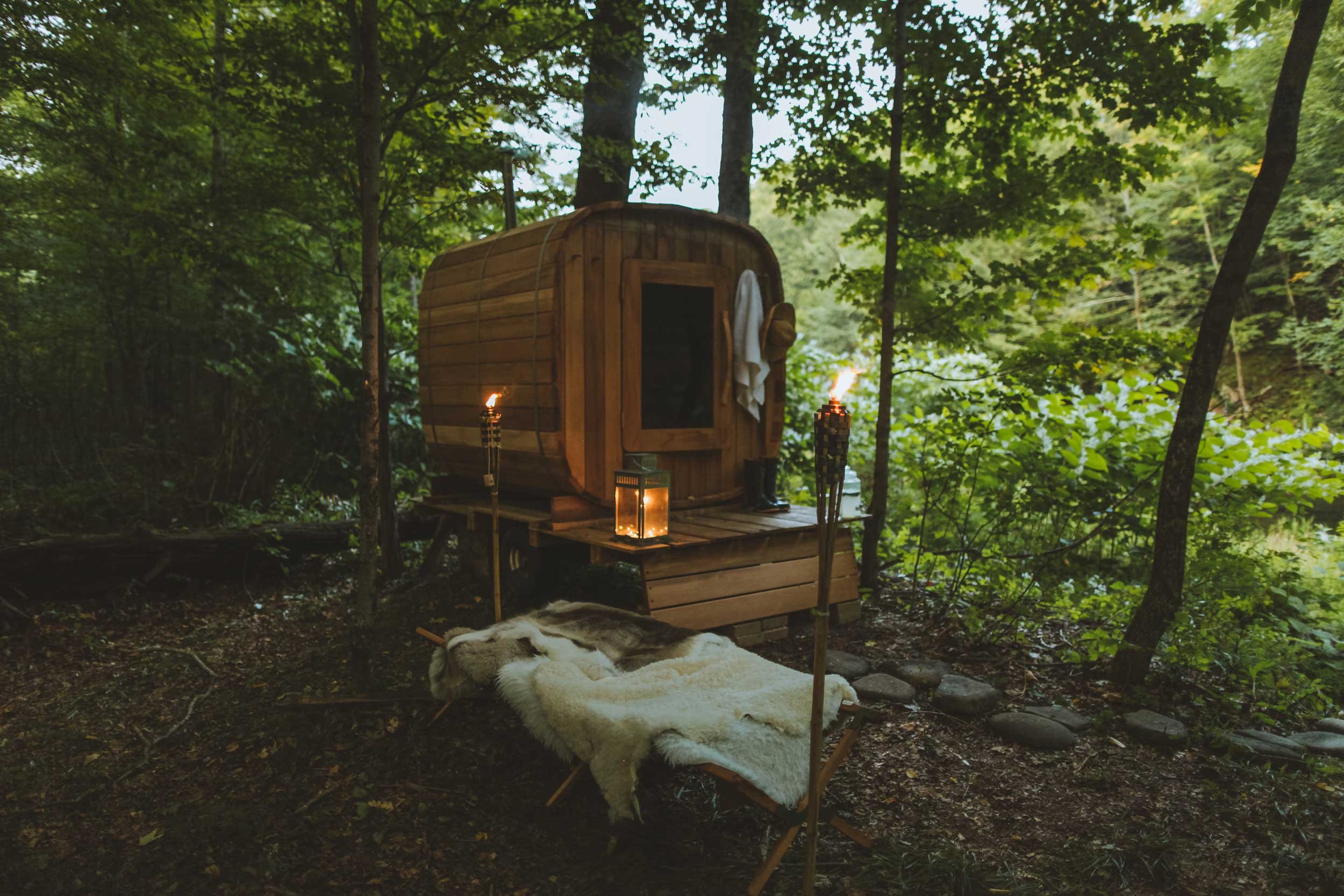
An onsite sauna.
Like the couple’s other properties the fly fishing club was purchased with a combination of debt and equity credit, then the couple saved money by doing much of the renovations themselves, repurposing items and scouring the internet for inexpensive building materials. For example, for one property they created a cottage-style herringbone-patterned floor from oak scraps.
Renovations to the Fly Fishing Club were minimal. Bathrooms were updated, floors fixed and a fresh coat of paint brightened interior rooms, without jeopardizing any of the club’s nostalgic charm. “What we tried to do is ensure that the integrity of the aesthetic and the sense of place and design was still intact,” says Watkinson. “We made some updates, but it wasn’t such a drastic shift that it didn’t feel like it wasn’t connected.”
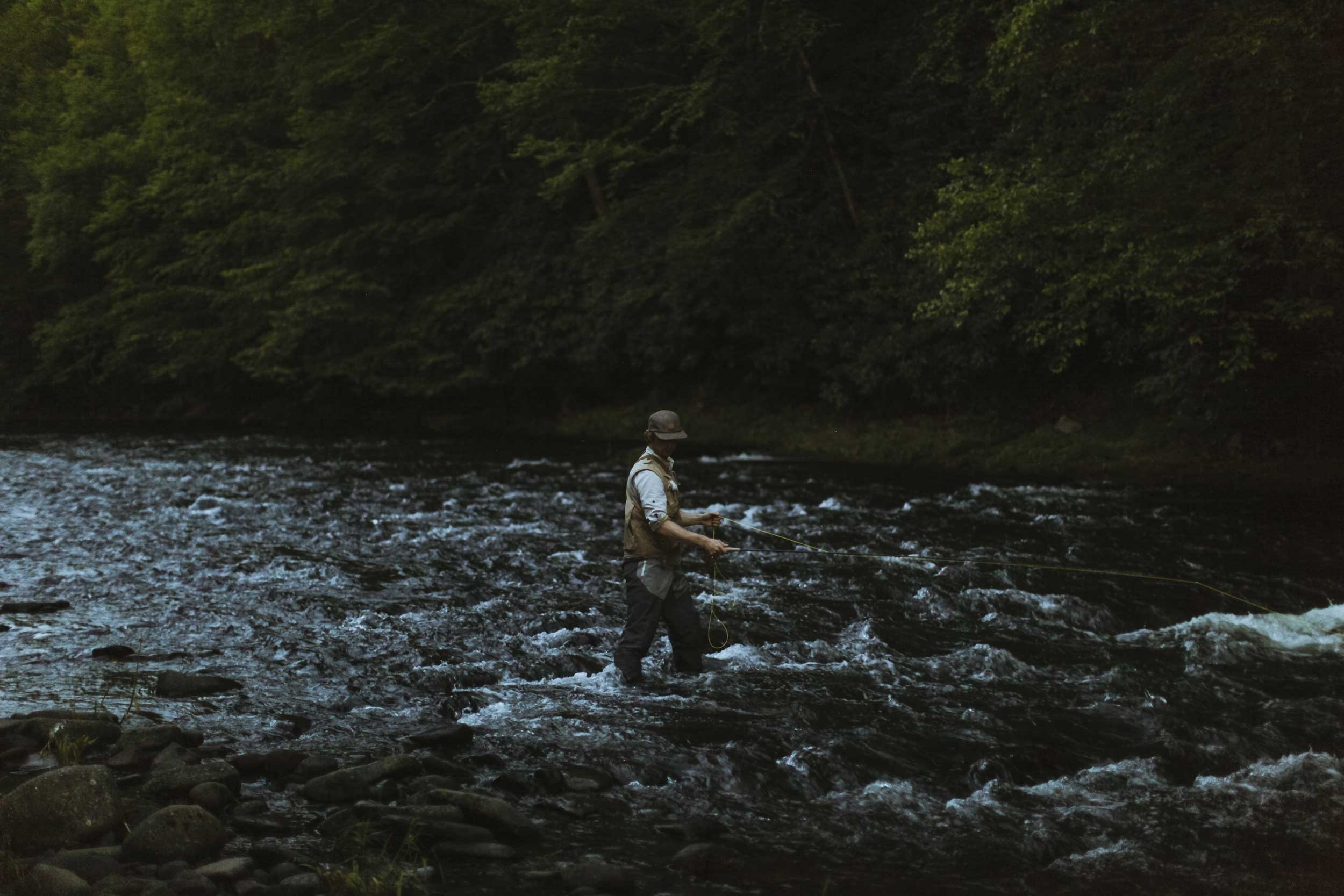
Livingston Manor is broadly considered the birthplace of fly fishing in America.
The club’s sunny upstairs unit now has white shipboard walls, with subtle texture supplied by sun-bleached antlers and vintage maps. In one bedroom, a 1920s leather exercise mat was repurposed as a luxuriously soft headboard, a contrast to crisp white sheets. Downstairs is darker and more club-like. Fish images and memorabilia fill the walls of the central all-purpose room, while a cozy reading nook hides behind a barn door.
“I do like to make it cheap and cheerful,” says Watkinson. “The reality is you don’t have to spend a lot of money on good design. It doesn’t always require that. You can, if you’re creative enough, find a way to make your design really effective.”
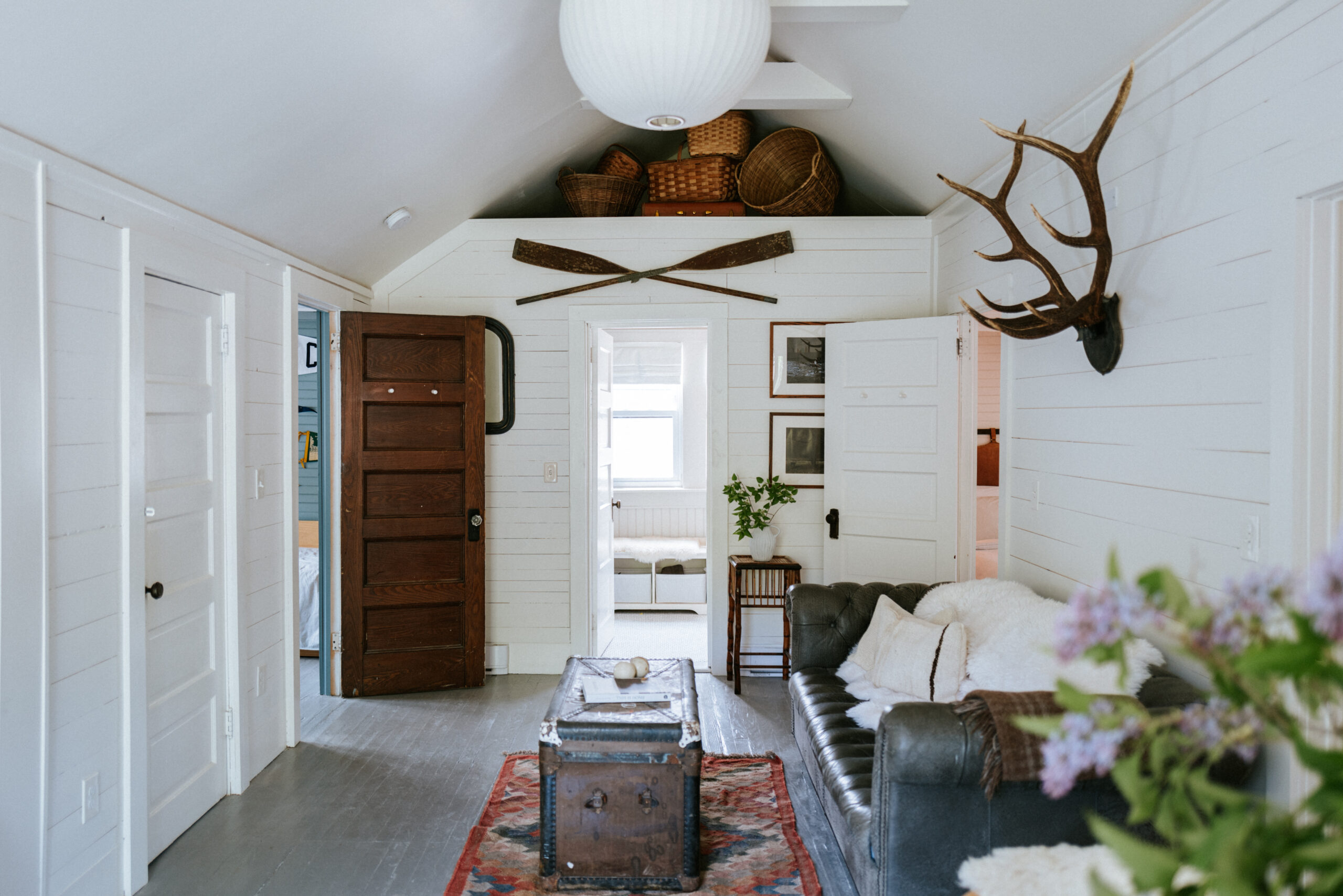 The couple is already working on their next project, transforming a barn-like structure in Stone Ridge into an event space and lodgings. The property is scheduled to open in the spring of 2024 and like their other locations has an event space that fits into the context of the site. When developing new properties they always consider the scale and incorporate materials that were already available.
The couple is already working on their next project, transforming a barn-like structure in Stone Ridge into an event space and lodgings. The property is scheduled to open in the spring of 2024 and like their other locations has an event space that fits into the context of the site. When developing new properties they always consider the scale and incorporate materials that were already available.
The Greenhouses, designed by architectural firm Studio Mapos, exist within the same footprint and pay elegant homage to the nursery they replaced. The tentipis at the Fly Fishing Club are set in the club’s expansive woods. The pergola event space at Old Mill is made from 16 x 16 posts that were milled from trees on the property. The pergola also benefits from a juxtaposition of scale, feeling enormous inside, but not dwarfing the farmhouse or the pool and cabana, which are set the same scale.
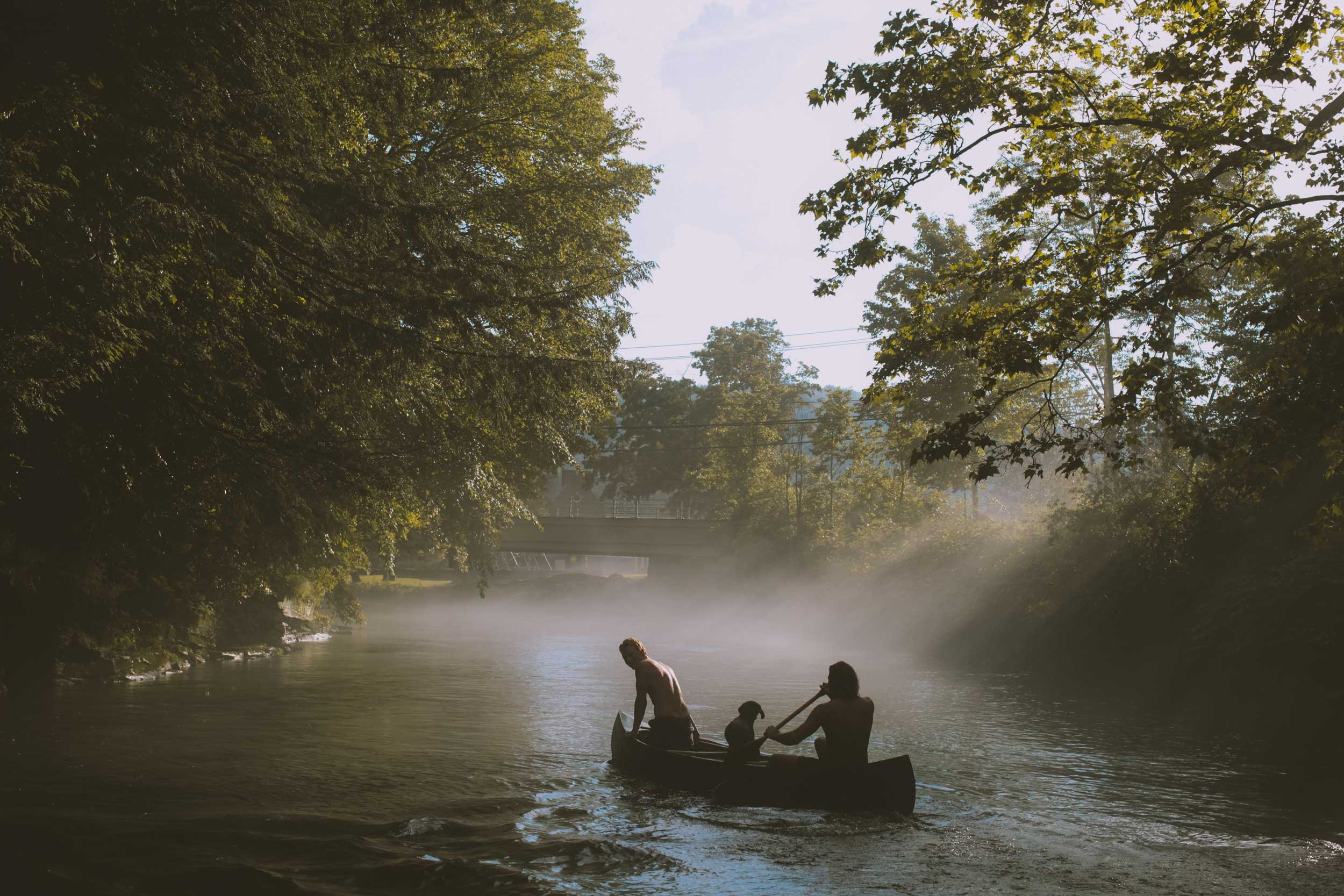
Access to the creek is one of the benefits of staying at LMFFC.
The Barn in Stone Ridge is contextualized by its materials, with siding that’s oxidized found lumber. The front of the barn, facing Route 209, functions as the back of the event structure, visible from the road as a historic barn building. The modern southern facade features a 50 ft. glass wall that grants access to the modernized interior space. Each location celebrates the natural beauty of the specific location.
“They have to have some element, some special thing that allows the suspension of disbelief,” says Posey. “You come to this event and it’s like you’re in a certain place, not just any place.”
The couple’s businesses are always in places they want to spend time in. “We’re always trying to figure out how to be there,” says Posey. “And how to be a business in this overlapping way.”
Read On, Reader...
-
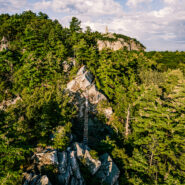
Jaime Stathis | February 15, 2024 | Comment The Hudson Valley’s First Via Ferrata at Mohonk Mountain House
-
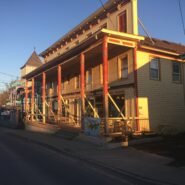
Ryan Keegan | November 28, 2023 | Comment Hunter, NY: Full Circle
-
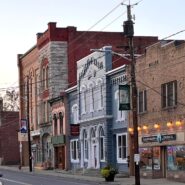
Ryan Keegan | October 17, 2023 | Comment Ellenville’s Next Chapter
-
